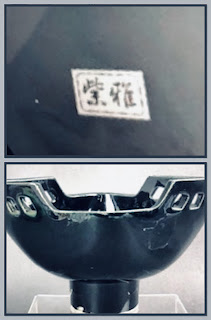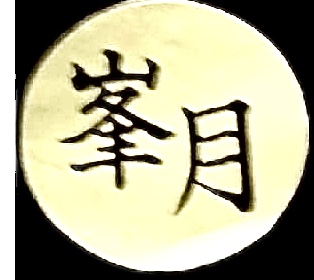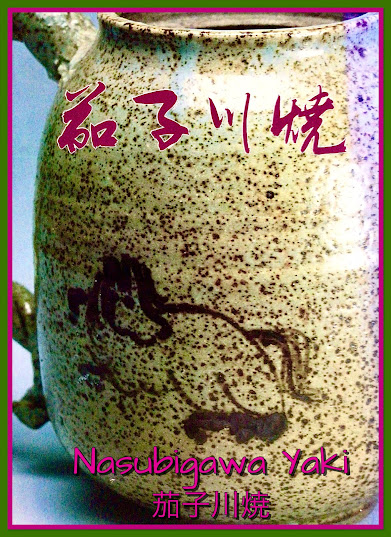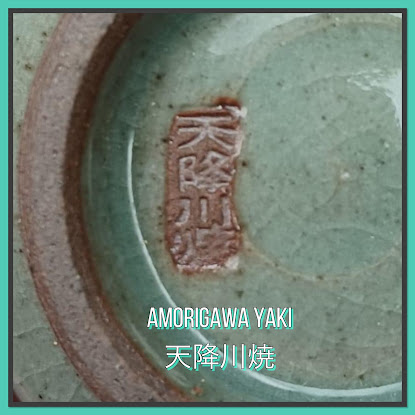An edited rough translation of a marker by Sakamoto District Cultural Heritage Preservation Society.
Sunday, November 6, 2022
NASUBIGAWA YAKI (茄子川焼)
An edited rough translation of a marker by Sakamoto District Cultural Heritage Preservation Society.
Thursday, November 3, 2022
KOKUJI YAKI (小久慈焼)-Ceramics of Iwate Prefecture
Kokuji Yaki originated in northern Iwate. By the mid 20th century it was on the verge of distinction because there were no successors to the kilns. Mr. Shimodake Takeshi went to study ceramics in Seto. He returned to the area and with Mr. Kumagai Ryutaro established an association to help train potters to revive the area ceramics industry.
Tuesday, October 25, 2022
HŌJU YAKI (宝珠焼)- Pottery of Fukuoka Prefecture
Thursday, October 20, 2022
TACHIBANA YAKI-Ceramics of Aichi Prefecture
Friday, October 7, 2022
Ikebana Vessel Production Ware
Hishoku Kiln (秘色窯) This is Tokoname Yaki, of Aichi Prefecture
Kōzan (光山) This is Yokkaichi Banko, of Mie Prefecture
Sansai-En (三彩園) This is Tokoname Yaki, of Aichi Prefecture.
Shōraku (勝楽) This is Yokkaichi Banko, of Mie Prefecture
Yamasan (山三窯)
Yamatei
Toyo 東洋
I’m not sure of the reading ( Seppō or Yukimine) but are made in factories at Yokkaichi Banko, Mie Prefecture.
 |
| Kagetsu 華月 |
 |
| 紫雅 |
 |
| Banko Yaki Hōgetsu |
| 草月 Sogetsu Arita Yaki Kozan kiln 琥山窯  |
Saturday, July 30, 2022
AMORIGAWA YAKI-Pottery of Kagoshima
Amorigawa Yaki is a kiln from the Satsuma Area (Kagoshima) on the southern Island of Kyushu. This is an obscure kiln settled in the area of Kirishima on the border with Miyazaki Prefecture. The area is volcanic and has onsen hot spring resorts.
Tuesday, July 12, 2022
KOGACHI YAKI-Ceramics of Okinawa Prefecture
Kogachi Yaki 古我知焼 of Okinawa. Died out in the the early 1800’s revived in 1970’s.
Saturday, June 11, 2022
SAKATSU YAKI-Ceramics of Okayama Prefecture
http://sakazuyaki.jp/rekishi.html
Partial Google translation from the link above
■ History of Sakazu ware kiln ■
Sakazu, Kurashiki City, where the kiln and workshop of Sakazu ware is located, is a 10-minute drive from Kurashiki Station. Sakazu is a water source in Kurashiki City, and there is a Sakazu-yaki kiln on the banks of Sakazu Park, which is famous for its cherry blossoms.
The first Sueyoshi Okamoto (No. Ceramics) opened a kiln in Enomachi at the foot of Mt. Tsurugata in 1869 (Meiji 2). It is a thing.
In 1876 (Meiji 9), he heard that there was good quality pottery clay in Sakazu and moved the kiln to Sakazu. Was named "Kabutoyaki" and used a helmet-shaped stamp. After that, Kabuto-yaki was changed to Kabuto kiln, and the kiln mark was changed to "Kabuto" or "Nishiyama" after the kiln at the foot of Nishiyama, which was built later. Eventually, it came to be called Sakazu-yaki by the place name. Since the first year of the Showa era, the kiln mark of "Sakazu" or "Sakatsu" has been stamped.
Thursday, May 26, 2022
KARIN GAMA Hanai Kenta- Ceramics of Tottori Prefecture
Hanai Kenta is an independent potter who established a kiln in Kawaramachi, in Tottori City. He studied under National Living Treasure for Koishiwara Yaki Fukushima Zenzo. His signature works give the impression of moss growing on a dark base. It is called Taigen-yuu. It is beautiful work. Thank you to Stewart Dorward for the photo and Alice Gordenker for bringing this fine potter to my attention.
 |
| Thanks to Alice Gordenker for this picture of a recent exhibit |
https://www.tokyoartbeat.com/events/-/2018%2F899D
https://www.instagram.com/karin_kiln/?hl=ja
Thursday, April 7, 2022
Banshozan kiln of Izumo, Shimane Prececture.
An Izumo area ceramic style, formerly known as Kurihara Yaki, began in the Meiji period and loosely followed the Fujina style after 1892. Later the kiln moved to more folk style wares. The current kiln is Banshozan gama.
Here is an example of their ware. It is a tea bowl, marked with the kiln seal and incised Izumo mark.
Featured Post
Helpful Vocabulary When Researching Japanese Ceramics
Vocabulary when searching for Japanese Ceramics *I will be adding to this list Dating ( 江戸) Edo Period (1603-1868) (江戸 前期) Ea...
-
From 1921-1941, wares from Japan exported to the United States had to be marked "Japan" or "Made in Japan". During Wor...
-
Kutani ware is from Ishikawa Prefecture. The markings are often in red, but can be impressed, in blue, gold and sometimes black with a g...
-
The This company was in business from 1954-1994. It was bought out by Enesco in 1994. Registered in NYC and San Francisco. Recognized by it...




























